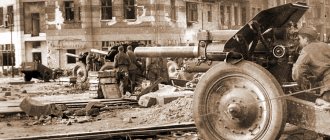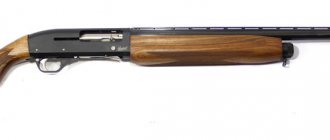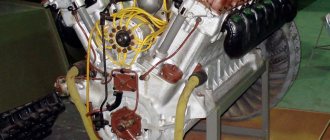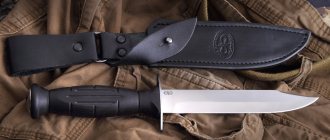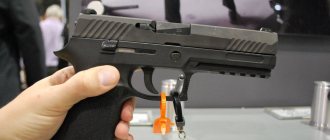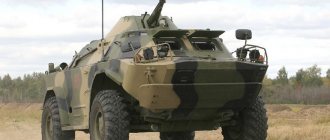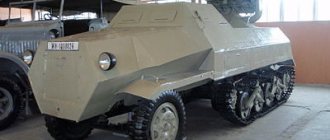The barrelless field rocket artillery system, which received the affectionate feminine name “Katyusha” in the Red Army, without exaggeration, became probably one of the most popular types of military equipment of the Second World War. In any case, neither our enemies nor our allies had anything like this.
Initially, barrelless rocket artillery systems in the Red Army were not intended for ground battles. They literally descended from heaven to earth.
The 82 mm caliber rocket was adopted by the Red Army Air Force back in 1933. They were installed on fighters designed by Polikarpov I-15, I-16 and I-153. In 1939, they underwent baptism of fire during the fighting at Khalkhin Gol, where they performed well when shooting at groups of enemy aircraft. In the same year, employees of the Jet Research Institute began work on a mobile ground launcher that could fire rockets at ground targets. At the same time, the caliber of the rockets was increased to 132 mm. In March 1941, field tests of the new weapon system were successfully carried out, and the decision to mass produce combat vehicles with RS-132 rockets, called BM-13, was made the day before the start of the war - June 21, 1941.
Story
The first experimental BM-13 launchers on the chassis of ZIS-6 vehicles were manufactured in June 1941 [2] in the amount of eight pieces - two in Voronezh, at the Comintern plant [3] and six in Moscow at the Research Institute-3 of the USSR NKB, and one installation was sent to Sevastopol for testing. Therefore, seven installations were used to form the first experimental battery in the Moscow Military District[4].
BM-13-16 on the ZIS-151 chassis. 2008
Until April 1943, for the installation of M-13-16 launchers (for sixteen 132-mm M-13 rocket projectiles) of the BM-13-16 guards rocket mortars, different chassis were used - from July to October 15, 1941, ZIS-6 (372, including for a small number of BM-8-36). Then on the chassis of the STZ-5-NATI tracked artillery tractor and the ZIS-5 truck, and from the beginning of 1942 on the chassis of American, British and Canadian trucks supplied to the USSR under Lend-Lease: Studebaker US6 (USA), GM -Ci 352 (GMC CCRW 352, USA), International M-5 Inter (International М-5Н-6-318, USA), Ford-Marmon-Herrington НН6-СОЭ4, USA), Chevrolet G7107/G7117 (Chevrolet G7107/G7117, USA), Dodge T203 (Dodge T-203B, Canada) (not to be confused with the well-known Dodge WC-51 and WC-52 (USA) with a payload of 3/4 ton - “Dodge three quarters”) , Bedford (Bedford OYD, UK), Ford WOT-8 “Fordson” (Ford WOT-8 “Fordson”, Canada - “Ford Canadian”), three-axle Austin K-6 (Austin K-6A, UK)[5 ].
Since April 1943, the BM-13N
— modification of the BM-13-16 on the Studebaker YUS6 chassis only. Index “N” – normalized[5][6].
During the 4 years of the war, out of 3,374 vehicle chassis used for mounting launchers of guards rocket mortars, Studebaker YUS6 accounted for 1,845 - 54.7%, ZIS-6 - 372 - 11%, the remaining 17 types of chassis - 1,157 - 34.3% [ 5].
Fire sword of the "god of war"
By May 1945, rocket artillery units had about three thousand combat vehicles of various types and many “frames” with M-31 shells. Not a single Soviet offensive, since the Battle of Stalingrad, began without artillery preparation using Katyusha rockets. Salvos from combat installations became the “fiery sword” with which our infantry and tanks made their way through enemy fortified positions. During the war, BM-13 installations were sometimes used for direct fire at enemy tanks and firing points. To do this, the combat vehicle drove its rear wheels onto some elevation so that its guides assumed a horizontal position. Of course, the accuracy of such shooting was quite low, but a direct hit from a 132-mm rocket would blow any enemy tank to pieces, a close explosion would knock over enemy military equipment, and heavy hot fragments would reliably put it out of action. After the war, Soviet designers of combat vehicles continued to work on Katyushas and Andryushas. Only now they began to be called not guards mortars, but multiple launch rocket systems. In the USSR, such powerful SZOs as “Grad”, “Hurricane” and “Smerch” were designed and built. At the same time, the losses of an enemy caught in a salvo from a battery of Hurricanes or Smerchs are comparable to losses from the use of tactical nuclear weapons with a yield of up to 20 kilotons, that is, with the explosion of an atomic bomb dropped on Hiroshima.
Modernization
- BM-13N - the basic version on the chassis of the Studebaker YUS6 car, in service since 1943, in 1948 - on the ZIS-150
- BM-13NN (GRAU Index - 52-U-941B) - a variant on the chassis of the ZIS-151 vehicle, adopted for service in 1949 (first modernization)
- BM-13NM (GRAU Index - 2B7) - a variant on the chassis of the ZIL-157 vehicle, adopted for service in 1958 (second modernization)
- BM-13NMM (GRAU Index - 2B7R) - a variant on the chassis of the ZIL-131 vehicle, adopted for service in 1966 (third modernization and last)
BM-13 combat vehicle on a three-axle vehicle chassis
The caliber of the projectile is 132 mm. Projectile weight - 42.5 kg. The mass of the warhead is 21.3 kg. The maximum projectile flight speed is 355 m/s. Number of guides - 16. Maximum firing range - 8470 m. Loading time of the installation - 3-5 minutes. The duration of a full salvo is 7-10 seconds.
Guards mortar BM-13 Katyusha on a Studebaker chassis
1. Launcher 2. Missiles 3. Vehicle on which the installation was mounted Package of guides Cab armor shields Travel support Lifting frame Launcher battery Sight bracket Rotating frame Lifting mechanism handle Launchers were mounted on the chassis of ZIS-6, Ford Marmont, “International Jimmy”, “Austin” and on STZ-5 tracked tractors. The largest number of “Katyushas” were mounted on all-wheel drive three-axle Studebaker vehicles.
M-13 projectile
01. Fuse retaining ring 02. GVMZ fuze 03. Detonator block 04. Bursting charge 05. Head part 06. Igniter 07. Chamber bottom 08. Guide pin 09. Powder rocket charge 10. Rocket part 11. Grate 12. Nozzle critical section 13. Nozzle 14. Stabilizer
Device
M-13 projectile M-13 projectile without warhead
The weapon is relatively simple, consisting of rail guides and their guidance device. For aiming, rotating and lifting mechanisms and an artillery sight were provided. There were two jacks at the rear of the vehicle, providing greater stability when firing. One machine could accommodate from 14 to 48 guides.
The body of the rocket (missile) was a welded cylinder divided into three compartments - the warhead compartment, the engine compartment (combustion chamber with fuel) and the jet nozzle. The M-13 rocket for the BM-13 ground installation had a length of 1.41 meters, a diameter of 132 millimeters and a mass of 42.3 kg. Inside the cylinder with the feathers there was solid nitrocellulose. The mass of the warhead of the M-13 projectile is 22 kg. The explosive mass of the M-13 projectile is 4.9 kg - “like six anti-tank grenades.” Firing range - up to 8.4 km.
The duration of the salvo for the BM-13 (16 shells) is 7-10 seconds, for the BM-8 (24-48 shells) - 8-10 seconds; charging time - 5-10 minutes. The launch was carried out by a hand-held electric coil connected to a battery and contacts on the guides - when the handle was turned, the contacts closed in turn and the starting squib was fired in the next projectile[7]. It is extremely rare that when there are a large number of guides on an installation, two coils are used simultaneously.
With half the charge of the Nebelwerfer, the damaging effect on unarmored vehicles and manpower was much stronger. This was achieved by increasing the gas pressure of the explosion due to the counter-propulsion of the detonation. The explosive was detonated from both sides (the length of the detonator was only slightly less than the length of the cavity for the explosive) and when two waves of detonation met, the gas pressure of the explosion at the meeting point increased sharply, as a result of which the shell fragments had a significantly greater acceleration, heated up to 600-800 ° C and had a good igniting effect. In addition to the body, part of the rocket chamber, which was heated from the gunpowder burning inside, also burst; this increased the fragmentation effect by 1.5-2 times compared to artillery shells of the same caliber. That is why the legend about the “thermite charge” in Katyusha ammunition arose. A thermite charge was tested in Leningrad in the spring of 1942, but it turned out to be unnecessary - after a volley of Katyusha rockets, everything was already burning (from the collection “Katyusha Guards” [ source not specified 296 days
]). The combined use of dozens of missiles at the same time also created interference of blast waves, which further enhanced the damaging effect. Unlike the German Nebelwerfer, it is an area weapon of low accuracy with a large dispersion of shells over the terrain. As a result, it was pointless to deliver precise strikes like the Nebelwerfer[5].
Crew (crew)
BM-13 (ZIS-6) consisted of 5-7 people.
- Gun commander - 1.
- Gunner - 1.
- Driver - 1.
- Loader - 2-4.
Relatives of the Katyusha
For all their advantages, high-explosive fragmentation rockets RS-82 and RS-132 had one drawback - large dispersion and low efficiency when affecting enemy personnel located in field shelters and trenches. To correct this shortcoming, special 300 mm caliber rockets were manufactured. They received the nickname “Andryusha” among the people. They were launched from a launching machine (“frame”) made of wood. The launch was carried out using a sapper blasting machine. “Andryushas” were first used in Stalingrad. The new weapons were easy to manufacture, but installing them in position and aiming at the target required a lot of time. In addition, the short range of the M-30 rockets made them dangerous for their own crews. Therefore, in 1943, the troops began to receive an improved missile, which, with the same power, had a greater firing range. An M-31 shell could hit manpower over an area of 2 thousand square meters or create a crater 2-2.5 m deep and 7-8 m in diameter. But the time to prepare a salvo with new shells was significant - one and a half to two hours. Such shells were used in 1944-1945 during the assault on enemy fortifications and during street battles. One hit from an M-31 missile was enough to destroy an enemy bunker or a firing point located in a residential building.
Application
The Great Patriotic War
A salvo from a BM-13-16 division during the Battle of Stalingrad.
October 6, 1942 Polish soldiers loading a Katyusha. Post-war photo Since the advent of rocket artillery (RA), its formations have been subordinate to the Supreme High Command. They were used to reinforce rifle divisions defending in the first echelon, which significantly increased their firepower and increased stability in defensive battles[8]. The requirements for the use of new weapons - mass and surprise - were reflected in the Supreme Command Headquarters Directive No. 002490 of October 1, 1941.
During the Battle of Moscow, due to the difficult situation at the front, the command was forced to use rocket artillery on a divisional basis.
But by the end of 1941, the number of rocket artillery in the troops increased significantly and reached 5-10 divisions in the armies operating in the main direction. Controlling the fire and maneuver of a large number of divisions, as well as supplying them with combat supplies and other types of food, became difficult. By decision of the Supreme Command Headquarters, the creation of 20 guards mortar regiments began in January 1942[8].
The “Guards Mortar Regiment (Guards Minp) of the Reserve Artillery of the Supreme High Command (RVGK)” consisted of a department, three divisions of three batteries. Each battery had four combat vehicles. Thus, a salvo of only one division of guards mortars from 12 BM-13-16 vehicles (Headquarters directive No. 002490 prohibited the use of rocket artillery in quantities of less than a division) could be compared in strength to a salvo of 12 heavy howitzer regiments of the RVGK (48 152 mm howitzers per regiment ) or 18 heavy howitzer brigades of the RVGK (32 152 mm howitzers per brigade).
The psychological effect was also important: during the salvo, all the missiles were fired almost simultaneously - within a few seconds the ground in the target area was literally plowed up by rockets. The mobility of the installation made it possible to quickly change position and avoid a retaliatory strike from the enemy.
On July 17, 1944, in the area of the village of Nalyuchi, a salvo of 144 launching frames equipped with 300-mm M-30 rockets was heard. This was the first use of a somewhat less famous related weapon - “Andryusha”[9].
In July-August 1942, the Katyushas (three regiments and a separate division) were the main striking force of the Mobile Mechanized Group of the Southern Front, which held back the advance of the German 1st Tank Army south of Rostov for several days. This is reflected even in the diary of General Halder: “increased Russian resistance south of Rostov.”
In August 1942, in the city of Sochi, in the garage of the Caucasian Riviera sanatorium, under the leadership of the head of mobile repair shop No. 6, military engineer of the 3rd rank A. Alferov, a portable version of the installation was created based on M-8 shells, which was later called the “mountain Katyusha”. The first “mountain Katyushas” entered service with the 20th Mountain Rifle Division and were used in battles at the Goytkh Pass. In February - March 1943, two divisions of “Mountain Katyushas” became part of the troops defending the legendary bridgehead on Malaya Zemlya near Novorossiysk.
In the 62nd Army in Stalingrad, on the T-60 base, the 4th Guards Mortar Regiment “Katyusha” fought, which was directly subordinate to Army Commander V.I. Chuikov. During the battle, the Katyushas used exclusively M-8 shells, in the KAT (thermite) modification. The temperature at the explosion site instantly rose to 4000 degrees Celsius. It was the use of these shells that was the root cause of the origin of the name “Katyusha”. The presence at the disposal of Army Commander V.I. Chuikov, a recognized master of close combat, of an entire Katyusha regiment, armed with thermite ammunition, allowed him and his headquarters to be on the front line on the most menacing days of the battle, 400 meters from the enemy line, behind him three hundred meters was located 4th Guards Mortar Regiment "Katyusha" under the command of Colonel Erokhin A.I. Any attempts by the Germans to attack in this area were stopped at lightning speed by a volley of thermite shells from rocket artillery. The army commander himself writes about this in his book “The Battle of the Century.” After the Battle of Stalingrad, for certain reasons, the use of thermite shells was stopped. There is a legend that the enemy High Command was presented with an ultimatum in which the German command threatened to start using chemical weapons if the Red Army did not stop using KAT thermite shells. This legend deserves attention for the reason that the Germans had a truly enormous arsenal of chemical weapons, but during the entire war they did not use a single chemical shell on the Eastern Front. Subsequently, the entire arsenal of chemical weapons of the Third Reich was sunk by the victorious countries in the Baltic Sea.
In addition, 4 installations based on railcars were created at the Sochi locomotive depot, which were used to protect the city of Sochi from the shore.
The minesweeper "Skumbria" was equipped with eight installations, which covered the landing on Malaya Zemlya[10][11].
In September 1943, during the Bryansk operation, the Katyusha maneuver along the front line made it possible to carry out a sudden flank attack, as a result of which the German defense was “collapsed” in a strip of the entire front - 250 kilometers. During the artillery preparation, 6 thousand rocket shells and only 2 thousand barrel shells were used.
Korean War
BM-13s were used quite widely by Chinese volunteers during the Korean War. In particular, the massive use of BM-13 made a significant contribution to the Chinese counter-offensive during the Battle of Triangular Hill, which began on October 30, 1952. That day, the 15th People's Volunteer Corps bombarded the UN troops for 12 hours with 133 large-caliber guns, 22 Katyusha BM-13s and 30 heavy 120mm mortars in the largest Chinese artillery operation of the war.
Vietnam War
BM-13s were used quite widely during the first and second Indochina wars.
Afghan War (1979-1989)
Between 1961 and 1963, the USSR supplied the Kingdom of Afghanistan with a number of BM-13s, which were used by government forces in the early stages of the Afghan War before being replaced by Soviet supplies of BM-21s.[12].
Baptism of fire near Orsha
The first salvo of a battery of Soviet rocket-propelled mortars (this is how the new type of military equipment began to be called for greater secrecy) consisting of seven BM-13 combat installations was fired in mid-July 1941. This happened near Orsha. An experienced battery under the command of Captain Flerov launched a fire strike at the Orsha railway station, where a concentration of enemy military equipment and manpower was noticed. At 15:15 on July 14, 1941, heavy fire was opened on enemy trains. The entire station instantly turned into a huge cloud of fire. On the same day, the Chief of the German General Staff, General Halder, wrote in his diary: “On July 14, near Orsha, the Russians used weapons unknown until that time. A fiery barrage of shells burned the Orsha railway station and all the trains with personnel and military equipment of the arriving military units. The metal was melting, the earth was burning.” The morale effect of the use of rocket mortars was stunning. The enemy lost more than an infantry battalion and a huge amount of military equipment and weapons at the Orsha station. And Captain Flerov’s battery dealt another blow on the same day - this time at the enemy crossing over the Orshitsa River. The Wehrmacht command, having studied the information received from eyewitnesses of the use of new Russian weapons, was forced to issue a special instruction to its troops, which stated: “There are reports from the front about the Russians using a new type of weapon that fires rockets. A large number of shots can be fired from one installation within 3-5 seconds. Any appearance of these weapons must be reported on the same day to the general commander of the chemical forces at the high command.” A real hunt began for Captain Flerov's battery. In October 1941, she found herself in the Spas-Demensky “cauldron” and was ambushed. Of the 160 people, only 46 managed to reach their own. The battery commander himself died, having first made sure that all the combat vehicles were blown up and would not fall into enemy hands intact.
Surviving copies
Memorial in Orsha at the ZiS-6 BM-13-16 at the ZiS-6 base in Kyiv at the Museum of the Great Patriotic War.
2008 BM-13-16 based on ZiS-6 in Rudnya. 2005 BM-13-16 of the 12th OGVMD on the STZ-5 chassis. Novomoskovsk BM-13 “Katyusha” on the chassis of a Studebaker US6 truck received under Lend-Lease at the Museum of Russian Military History in the village of Padikovo near Istra Almost all “Katyushas” assembled on the basis of domestic ZiS-6 trucks were destroyed by the war. To date, only a few copies of them have survived throughout the CIS:
- In the Museum of Artillery, Engineering Troops and Signal Corps in St. Petersburg
- At the 116th km of the Moscow-St. Petersburg highway, at the turn to the road to the city of Konakovo, the Katyusha monument was erected. The monument was built in 1965. At this line, the offensive of the troops of the Kalinin Front began in December 1941, where fierce and bloody battles took place. Our troops repulsed numerous enemy attacks, delaying his advance towards Moscow. On the pedestal there is a memorial plaque with the inscription: “Here there were battles, here a faithful son, engulfed in flames, stood to the death of Russia. From here began the soldier’s path, the difficult path to victory in Berlin.”
- In Zaporozhye.
- A mortar based on the “Polutorka” stands as a monument in the Ukrainian Kirovograd (now renamed Kropyvnytskyi),
- Monument near
in Sumy region - In the Nizhny Novgorod Kremlin.
- In the open-air museum "Military Hill" in Temryuk.
- In Moscow, on the territory of the Research Center named after M.V. Keldysh (based on ZiS) [ source not specified 975 days
] - In Kubinka VPPKiO "Patriot" aerospace forces sector, pavilion No. 11. Katyusha based on the ZIS-151. Previously stored at motor depot 147 of the Russian Defense Ministry in Moscow[15]
- Two mortars are located on the territory of the Sevastopol diorama in Crimea[16].
- In Armyansk in Crimea at the entrance to the city from the Crimea. (map)
- In Novosibirsk, on the monument of glory there is a BM-13 based on the ZiS-6[17].
- In Kyiv at the Museum of the Great Patriotic War of 1941-1945.
- In Odessa at the Memorial of the 411th Coastal Battery.
- In the city of Korsun-Shevchenkovsky, Cherkasy region, in the museum of the Korsun-Shevchenkovsky battle.
- In Izium, as a monument in the Memorial complex.
- In Mtsensk, like a monument.
- In the Novomoskovsk Historical and Art Museum (city of Novomoskovsk, Tula region), as a monument. On the move, led the Victory Parade on May 9, 2020 (the only one preserved on caterpillar tracks).
- In Kirov, on the territory of OJSC “Kirov Machine-Building Plant 1 MAY”, as a monument.
- The Museum of Russian Military History in the village of Padikovo, Moscow Region, displays an early production Katyusha BM-13-16, the so-called “non-normalized” one, on the chassis of a Studebaker US6 truck received under Lend-Lease.
- In Belgorod, in the open-air museum.
- In Seoul in the military museum (trophy captured during the Korean War)
- Monument-memorial in the city of Tula
- On the territory of Izmailovsky Park in Moscow[18].
- In the city of Rudnya, Smolensk region. During restoration in the eighties, it turned out that the shells on the monument were live.
- In the village of [Znamenka], Ugransky district, Smolensk region. Pedestal on the field of memory.
- In the town of Verkhnyaya Pyshma, Sverdlovsk Region, as exhibits of the UMMC Museum of Military Equipment: model 1943 on the chassis of a Studebaker US6 truck received under Lend-Lease, model 1941/1951, BM-13NM model 1958, BM-13NMM model 1966.
According to the Military Balance 2014 yearbook, in 2014, 2 BM-13 vehicles remained in service with the Ukrainian Army.
Few survived
The effectiveness of the combat use of Katyushas during an attack on an enemy fortified unit can be illustrated by the example of the defeat of the Tolkachev defensive unit during our counteroffensive near Kursk in July 1943. The village of Tolkachevo was turned by the Germans into a heavily fortified resistance center with a large number of dugouts and bunkers of 5-12 roll-ups, with a developed network of trenches and communication passages. The approaches to the village were heavily mined and covered with wire fences. Salvos of rocket artillery destroyed a significant part of the bunkers, the trenches, along with the enemy infantry in them, were filled up, and the fire system was completely suppressed. Of the entire garrison of the junction, numbering 450-500 people, only 28 survived. The Tolkachev junction was taken by our units without any resistance.
Notes
- Organ - musical instrument - history, photo, video | EOMI Encyclopedia (undefined)
. eomi.ru. Retrieved December 17, 2020. - On June 15-17, 1941, military tests were carried out at the Sofinsky training ground, and on June 21, 1941 it was adopted for service - Resolution of the Central Committee of the All-Union Communist Party of Bolsheviks of June 21, 1941.
- P. Fedin. Katyushas are going into battle. Serial production of launchers began on the fifth day after the attack by Nazi Germany // Izvestia, No. 307 (20653) dated November 3, 1941, p. 3.
- Directive of the commander of the Moscow Military District (MVO) No. 10864 dated June 28, 1941 “On the formation of the first experimental battery of RS-132 rocket launchers” (later renamed the 1st separate mortar battery).
- ↑ 1234
“Luka” and “Katyusha” against “Vanyusha”. “Equipment and weapons” No. 1 1995. - Gogolev L. D.
Cars-soldiers: Essays on the history of development and military use of cars. - M.: Patriot, 1990. - P. 124. - 191 p. — ISBN 5-7030-0226-5. - Gogolev L. D.
Cars-soldiers: Essays on the history of development and military use of cars. - M.: Patriot, 1990. - 191 p. — 100,000 copies. — ISBN 5-7030-0226-5. - ↑ 12
Regiment. I. Prokhorkov, regiment. V. Trusov, “Rocket artillery in the Great Patriotic War” - “Military Historical Journal”, No. 1, 1966. - Vyazinin I.V.
The fiery miles of old Russian front-line soldiers.
- Staraya Russa: Starorusskaya Printing House, 2001. (inaccessible link - history
,
copy
) Retrieved April 29, 2020. - Armored trains and mountain Katyushas to the front! Archived copy dated September 9, 2020 on the Wayback Machine Newspaper “Gudok” dated March 19, 2005
- G. Sushan
. SUCH DIFFERENT “KATUSHAS” (inaccessible link) // magazine “Technology for Youth” No. 8 / 2002 - AFGHANISTAN. 1919—1978
- The Military Balance 2020. - P. 277.
- The Military Balance 2020. - P. 190.
- New exhibits have arrived at Patriot Park - vintage cars from the USSR - Kubinka.Info (Russian) (inaccessible link). kybinka.info. Retrieved February 16, 2020. Archived February 17, 2020.
- see photo dated 08/05/2011 (unspecified)
(inaccessible link). Retrieved October 27, 2020. Archived October 18, 2020. - Monument "Katyusha" Department of Culture of the Kirov City Administration
Jet attack
Although the Katyusha became the first truly combative domestic ground-based rocket launcher, work on the creation of jet weapons began long before its appearance. The first studies were carried out in Tsarist Russia, in 1916. After the victory of the revolution, a special Jet Research Institute (NII-3) was created.
He successfully developed several designs of rockets, and the first of them in 1937-1938. began to be used in aviation. The success of using this weapon at Khalkhin Gol aroused a desire among the country's military leadership to obtain a similar projectile for ground artillery. In December 1938, this task was completed - the new RS-132 projectile flew further and more accurately than its aviation predecessor. A launch platform with guide “rails” for projectiles located across the axis of the vehicle was also developed. It could be mounted on a ZIS truck.
Katyusha prototype: launcher for 132 mm rockets (1938)
However, the invention had to be tested under production conditions and ensure the production of first pilot and then serial batches. To accomplish this task, the plant named after. Comintern in Voronezh. Officially, it was engaged in the production of agricultural machinery and equipment for the food industry, but to knowledgeable people it had long been known as a secret defense facility.
Literature[ | ]
- Guards mortar units // Babylon - “Civil War in North America” / [under the general. ed. N.V. Ogarkova]. - M.: Military publishing house of the Ministry of Defense of the USSR, 1979. - (Soviet Military Encyclopedia: [in 8 volumes]; 1976-1980, vol. 2).
- Guards mortar units // Military encyclopedic dictionary / Prev. Ch. ed. commission S. F. Akhromeev, I. O. chapters ed. S. G. Shapkin. — 2nd ed. - M.: Voenizdat, 1986. - P. 182. - 863 p. — 150,000 copies.
- AKIMOV V.N., KOROTEEV A.S., GAFAROV A.A.
and others. Weapon of victory - “Katyusha” // Research Center named after M. V. Keldysh. 1933-2003: 70 years at the forefront of rocket and space technology. - M: “Mechanical Engineering”, 2003. - P. 92-101. — 439 p. — ISBN 5-217-03205-7. - Artillery on the “scales” of Victory. Multiple launch rocket systems - MLRS (unspecified)
. Federal Archives Agency (2010). — Digital copies of dozens of archival documents from 1941-1984. Retrieved November 14, 2020. Archived November 14, 2020.
Links[ | ]
| MLRS of the USSR and Russia | ||
| Guards rocket launchers |
| |
| Post-war MLRS |
| |
| Heavy rocket launcher systems |
| |
